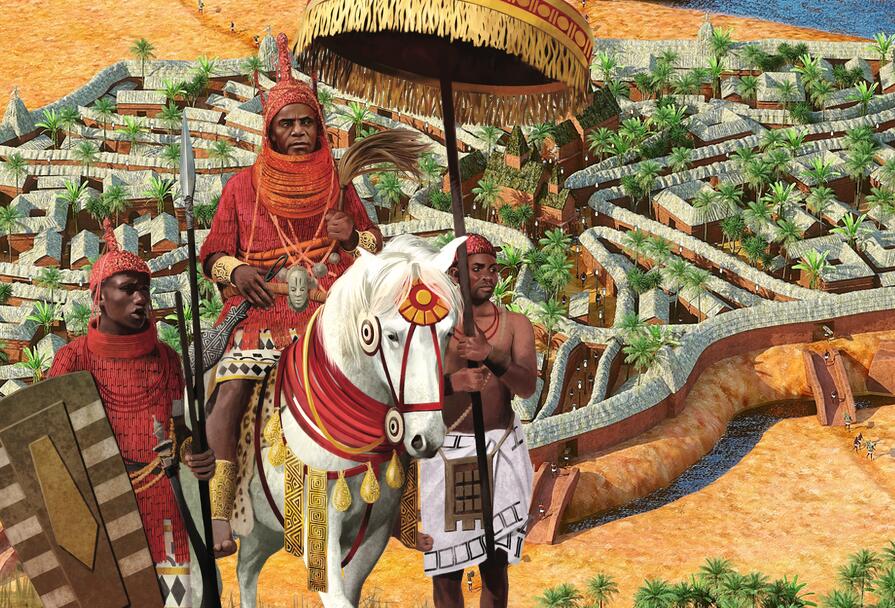Nigeria Brief History
Federal state of West Africa. Nigeria is the most populous country on the African continent; there are hundreds of ethnic groups that make up the Nigerian nation. The most numerous are hausa-fulani, yoruba, ibo, efik, edo, ibibio and tiv. For the most part Muslims, Christians make up about two fifths of the population and the number of followers of other religions is small. A country in West Africa, the Nigeria faces S on the Atlantic Ocean and is crossed by two major rivers: the Niger and the Benue. The second is tributary of the first that flows into the Gulf of Guinea forming one of the largest deltas in the world. Statistical-lexical, archaeo-botanical and dietological research, including the thirty-year one of the Tervuren group (Royal Musée of Belgium), have placed in the od. Nigeria and Cameroon the origin of the peoples bantu. From here, from the first two millennia BC, the peoples who now inhabit a large part of tropical Africa would have spread. Archaeological research has identified metalworking epicenters dating back to the 11th century. AD to SW of the od. Nigeria, in the area of the Oyo kingdom, which in the 14th century. it traded with the sultanates of the Sahelian belt and in the 15th century, at the dawn of the Atlantic trade, with Europeans arriving from the sea. In the North, the archaeological finds on processing are even older and between the 9th and 11th centuries. AD there is the Hausa exegesis attested by the construction of fortified cities (birane), political capitals of kingdoms that arose along the trans-Saharan long-distance trade routes. Islam arrived in the North around the 9th century, but only in the 13th century. the ruling Hausa elites had converted to the monotheistic religion. For this reason, the action of the Fulani Muslims, who populated the courts as advisers, scholars and teachers, was fundamental. Cities and centers of commerce (Kano and Katsina) have become important epicenters for the spread of Islam to which the masses have slowly converted. Always to the North in the 8th-9th century. Kanem – Borno was born, whose period of maximum expansion was the 16th-17th century, when it covered a territory that from the od. Nigeria NO arrived at Fezzan (in the od. Southern Libya). AS, the Oyo kingdoms and Benin had dynasties with a power based on the proceeds of the Atlantic slave trade and supported by a complex political-fiscal system that linked the center and the provinces. Between 17th and 18th century the trade in slaves, food, palm oil, metals, etc., both with Europeans and with the kingdoms and sultanates of the interior and of the North, characterized the period of maximum munificence of the southern courts. Other social groups, eg. tiv, efik, ibo, etc., possessed decentralized or segmentary forms of government (so-called acephalous or “stateless”). Small groups of villages had a strong propensity for self-government. Over the centuries of trafficking, the weakness, especially of a military nature, towards the centralized kingdoms, has made these societies subject to slave raids by the powerful neighboring states. In headless societies, the decision-making weakness, given by the lack of a central coercive source, was compensated for by secret societies, such as for example. Ekpe among the efiks, which constituted an element of organization of the tax system, training of young people and management of justice. In the Hausa states of the North, since the end of the 17th century, an important number of rulers devoted to Islam (emirs) have prospered thanks to the trade and agricultural activities in the rich savannah areas. Education and political reforms made Hausa states strong enough to ramp up Oyo during jihad fulani of the 18th century. Between 1804 and 1808, the Fulani leader Usman dan Fodio (1754-1817) united the Hausa states in the Sokoto Caliphate, which became the largest slave state in nineteenth-century Africa, when Europe decreed the end of that practice. During the 19th century, despite the growing demand for palm oil and other products, the southern kingdoms. they suffered a political decline in conjunction with the end of the Atlantic trade. In the middle of the 19th century, apart from the English presence in Lagos, Europe’s political interest in Nigeria seemed to drop enormously also because the region did not present environmental conditions useful for the establishment of white settlers. Nevertheless, given the wealth of products such as spices (pepper), palm oil (used to lubricate the machines of the Industrial Revolution and to make soaps whose use increased with the expansion of hygiene culture in the world), timber, etc., in 1861, the English colony of Lagos was founded and shortly afterwards the Oil rivers protectorate in SE was established.
According to HARVARDSHOES.COM, the Sokoto Caliphate still remained outside such processes, maintaining substantial independence until the early 20th century. In 1914, the Colony and protectorate of Southern Nigeria was unified with the Protectorate of Northern Nigeria with a territory roughly corresponding to that of the present Nigeria Despite the unification, the British continued to rule N, S and Lagos as separate political and administrative entities. The Constitution of Governor Clifford (1922) represented the first attempt to integrate the three territories through, for example, the establishment of a local legislative council with competence throughout the Nigerian territory. elite that were part of it. The first decades of the 20th century. they saw a phase of economic, infrastructural and urbanization growth. In 1938 the National youth movement was born among the educated, urbanized and trade-related strata of the population, the first nationalist movement for the independence of Nigeria. The post WWII nationalist movement was resurrected with the National youth movement, co-founder of the National council of Nigeria and the Cameroons (NCNC) made up of veterans, workers, students, etc. especially southerners. Two constitutions of a European type were drawn up by the British governors Richards (1946) and MacPherson (1951); with them the Nigeria was divided into three federated regions (Northern, Western, Eastern) plus the city of Lagos. The nationalist movement was divided between progressives, especially from S.



